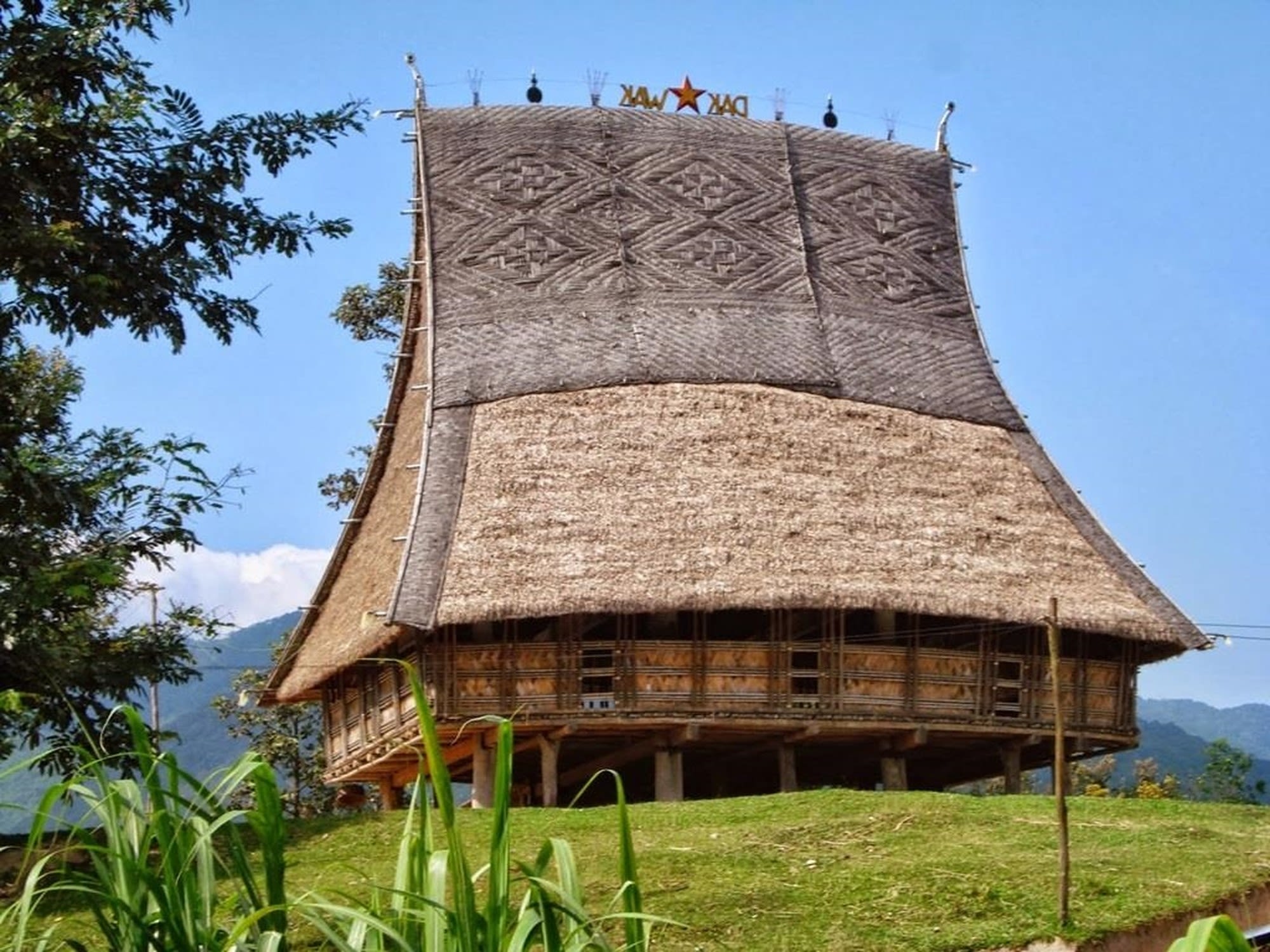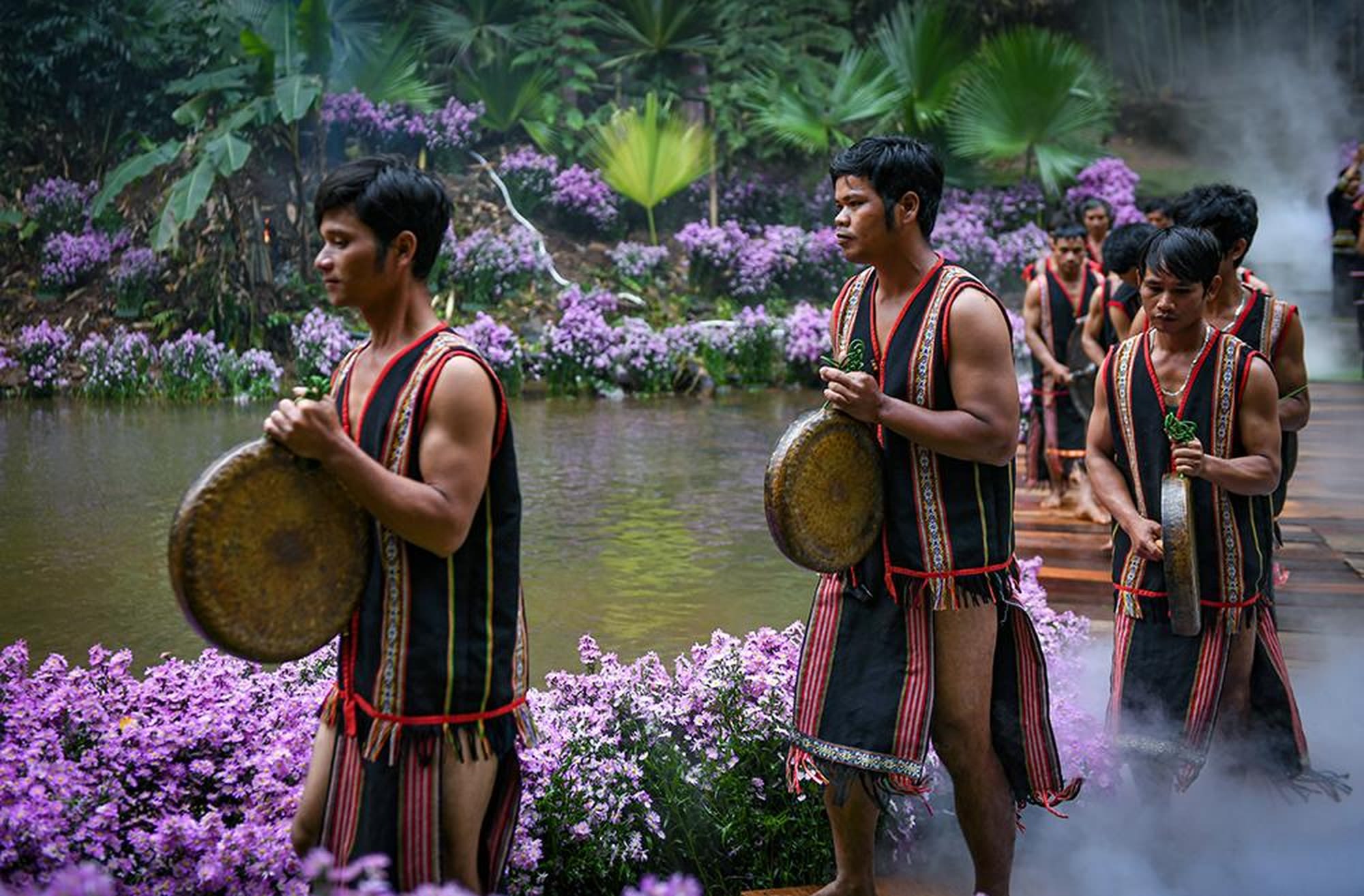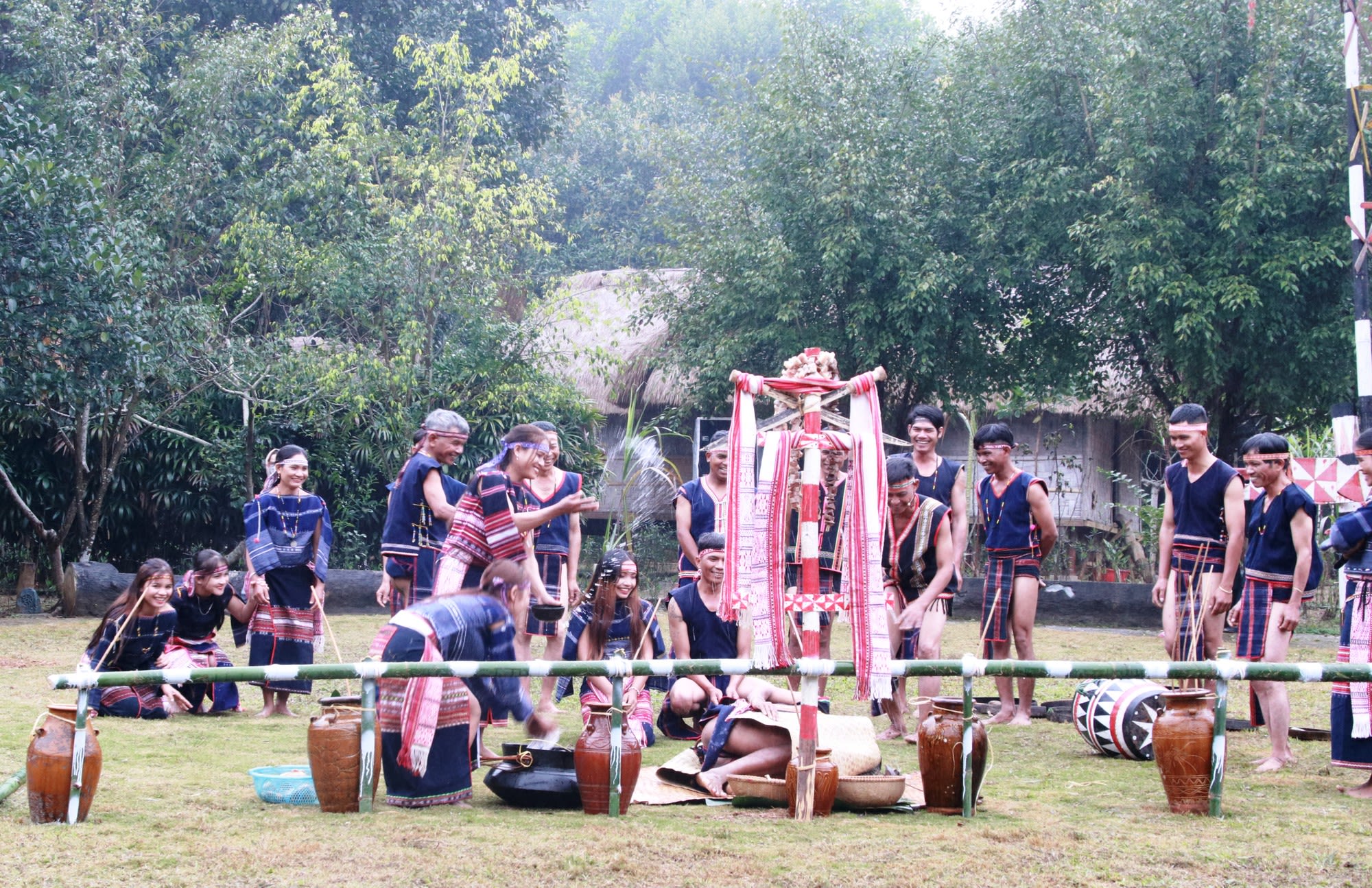
Other names: Bo Nam, Koh, Kon Kde, Ala Kong, Kpang Kong
Language: Bahnar language belongs to the Mon Khmer language family of South Asia.
Residence: The residence area of the Bahnar people is spread over Gia Lai, Kon Tum and western areas of Binh Dinh, Phu Yen and Khanh Hoa provinces.
History: The ancestors of the Bahnar people lived mainly under Mang Yang Mountain, along the two banks of the Ba River eastward, to the plain districts bordering the mountainous districts in Binh Dinh Province. Later, due to the impact of the migration process over the periods, Bahnar people gradually migrated westward to Ayun and Dak Bla river basins and Kon Tum as today. It can be said that the history of the Bahnar people is closely related to the history of the ethnic groups in the Central Highlands. Bahnar ethnic group has a courtesy name of Bahnar which means “people in the mountains”. In addition, they have many other names including Bo Nam, Roh, Kon Kde, Ala Kong, Kpang Kong, etc.
Bahnar ethnic group
As the ethnic group with the largest population among the groups using the Mon-Khmer language family in the Central Highlands and the second in Vietnam, the history of the Bahnar ethnic group is closely linked with the history of the Central Highland ethnic groups, forming a unique and distinctive culture.
History
The ancestors of the Bahnar people mainly lived in the area under the Mang Yang Mountain, along the two banks of the Ba River eastward to the plain districts bordering the mountains and the mountainous districts of Binh Dinh Province. Later, due to migration through the ages, Bahnar people gradually migrated westward to Ayun and Dak Bla river basins and Kon Tum as today. It can be said that the history of the Bahnar people is closely related to the history of the ethnic groups in the Central Highlands.
Bahnar ethnic group has a courtesy name of Bahnar which means “people in the mountains”. In addition, they have many other names including Bo Nam, Roh, Kon Kde, Ala Kong, Kpang Kong, etc.
Geographical distribution
The residence area of the Bahnar people is spread over Gia Lai, Kon Tum and western areas of Binh Dinh, Phu Yen and Khanh Hoa provinces.
Population, language
Population: According to census data of 53 ethnic minorities on April 1, 2019, the total population of Bahnar people reached 286,910. Of whom, 141,758 are male and 145,152 are female. The household size is 4.6 people per household. 89.5% of the population lives in rural areas.
Language: Bahnar language, belongs to the Mon Khmer language family of South Asia.
Main features
Traditional social institutions: The Bahnar people live in villages (also called plei). Their villages are located in flat or relatively flat places, along rivers and streams and on a small scale. Although the matrilineal system has disintegrated in Bahnar society, the remnants are still evident in family, clan and marriage relations, such as a common habit of residence at the wife's home following the marriage.
Housing: The Bahnar people live in houses on stilts made of bamboo and leaves. In the past, a large family lived in a house on stilts with dozens of compartments. However, the people now constructed houses with 3 or 5 compartments each, for a small family of 2-3 generations.
Prominent among the villages of the Bahnar people are the soaring communal houses (nha rong), which are erected in the most solemn position in the village. These houses are used for people to organise common cultural activities.

Traditional wedding ceremony of the Bahnar people in Gia Lai. (Credit: Vietnam National Village for Ethnic Culture and Tourism)
Traditional wedding ceremony of the Bahnar people in Gia Lai. (Credit: Vietnam National Village for Ethnic Culture and Tourism)
Costume: On weekdays, the Bahnar men wear loincloths and are half-naked. Only on festival days do they wear shirts and scarves on their heads. Women often wear skirts, tops and scarves on their heads.
Religion and belief: In the belief system of the Bahnar people, life manifests as a unity and is an arrangement from the hands of the gods (called yang in the Bahnar language). In particular, Bok Kei Dei and Yă Kuh Keh are the supreme god couple, who create everything and take care of people and crops. In addition, the Bahnar people worship the forest god (yang Bri), the earth god (yang The), the rock god (yang Tmo), the mountain god (yang Kong), etc.
Cuisine: Every day, the Bahnar people eat plain rice. During the rituals or welcome to precious guests, they often drink ruou can (wine drunk from a jar through pipes) that are made from rice, corn, cassava and millet, and brewed with yeast made from herbs. Both Bahnar men and women like to smoke.

Photo: Thanh Dat
Photo: Thanh Dat
Education: The traditional education for Bahnar youths is held regularly at the communal houses by the village patriarch. It is also a place for vocational training, combat training and learning the cultural traditions of the community.
According to census data of 53 ethnic minorities on April 1, 2019, the rate of people aged 15 years and older who can read and write reached 67.8%. The proportion of people at the primary level is 99.6%, people at lower secondary schools is 69.1%, and people at high school is 20%. Meanwhile, the rate of out-of-school children is 28.4%.
Marriage: The Bahnar people practice monogamous marriage, alternate residence and the principle of getting married in the same ethnic group, and not marrying each other in the same clan. After the alternate residence cycles end, the couple moves out to live separately.
Festival: In the past, the Bahnar people used to celebrate their traditional Tet (Lunar New Year Festival) after harvesting. However, now they celebrate Tet according to the calendar of the Kinh (Vietnamese) people.
Economic conditions
The Bahnar people live based on mainly shifting cultivation. In addition, they work in both wet and dry fields, as well as grow long-term crops.
Along with farming, each family often raises poultry and livestock. The handicrafts of the Bahnar people include knitting, weaving, blacksmithing, pottery and wood carving. In particular, knitting and weaving play an important role in their life.
Today, the trading activities between the Bahnar and Kinh people are conducted mainly through grocery stores, small local service shops, traders and peddlers.

One of the brocade patterns of the Bahnar people (Credit: Vietnam National Village for Ethnic Culture and Tourism)
One of the brocade patterns of the Bahnar people (Credit: Vietnam National Village for Ethnic Culture and Tourism)